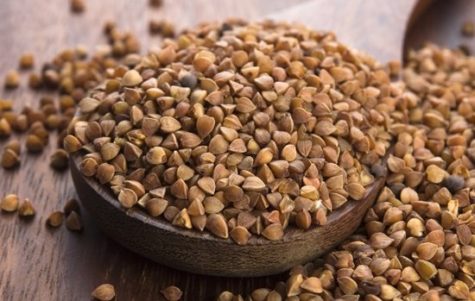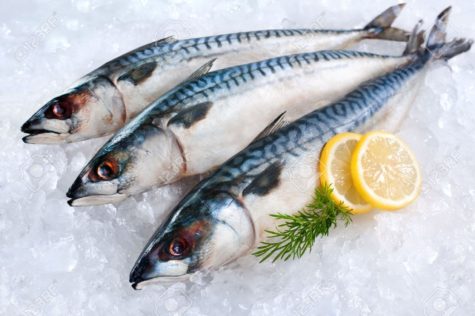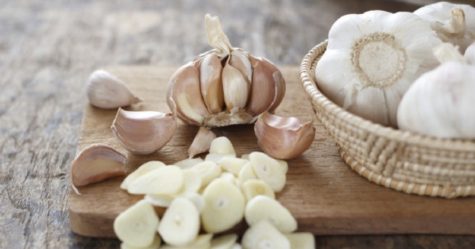Individual Foods
The Health Benefits of Buckwheat
Buckwheat has an impressive catalog of nutritional properties:
- Non-GMO (It requires hardly any chemicals to grow well because it naturally grows so quickly).
- High quality proteins (it contains all 9 amino acids)
- Good energy booster (rich in iron and antioxidants
- Naturally contains vitamins and minerals (including zinc, copper and niacin)
- Great for digestion
Because of it being an insoluble fibrous food, buckwheat is essential for cleaning and strengthening intestines. Insoluble fiber also reduces the secretion of bile acids and lowers triglycerides (blood fats). This is particularly good for those suffering with IBS-D, or anybody who has stomach trouble immediately after consuming foods.
Full of healthy fats:
Anybody looking to remain satiated will know that eating plenty of healthy fats is the way forward. Rather than stocking up on high-calorie, low-energy foods such as bread and processed foods, foods high in healthy fats keep you fuller for longer and see that your nutrition quota is also met. Healthy fats are especially great for IBS sufferers as we need to eat small meals, regularly – the healthy fats mean sugar and fat cravings don’t come about to instigate any flare-ups.
Impressive fiber levels:
Although it depends which type of digestive ailment you suffer from, most people will be thankful for a little added fiber to their diet. High fiber foods bulk up the digested food particles, meaning they are easier to pass and less of a trial for your digestive tract. With 4.54 grams of fiber in just 1 cup, you can see that buckwheat is incredibly high in fiber.
Low glycemic index:
The great thing about buckwheat is that it has a low GI of 54, which means it lowers blood sugars and digests the glucose more slowly than similar products like rice or wheat. Studies have further found that whole buckwheat groats contributed to significantly lowered blood glucose and insulin responses than when the participants ate refined wheat flour products. Whole buckwheat also scored highest on their ability to satisfy hunger.
What can you do with buckwheat?
You can buy raw buckwheat from just about any supermarket or food store in the wholefoods section. I recommend playing with it and seeing what interesting, healthy recipes you can make with it. You can use buckwheat flour as a gluten free alternative when making pancakes and other breads. Soba or buckwheat noodles are a great substitute for pasta, particularly if you are on a gluten free diet.
A Few Quick Serving Ideas
- Combine buckwheat flour with whole wheat flour to make delicious breads, muffins and pancakes.
- Cook up a pot of buckwheat for a change of pace from hot oatmeal as a delicious hearty breakfast cereal.
- Add cooked buckwheat to soups or stews to give them a hardier flavor and deeper texture.
- Add chopped chicken, garden peas, pumpkin seeds and scallions to cooked and cooled buckwheat for a delightful lunch or dinner salad.
Source: My Wellbeing Journal
The Best and Worst of Fish
Unfortunately, fish, such an ancient benefactor, is sometimes contaminated with modern poisons, such as pesticides and other industrial chemicals. Here are ways to get the most health benefits from fish with the least hazards.
- Choose saltwater ocean fish over freshwater fish from streams, rivers and lakes, which are more apt to be polluted.
- Avoid sport fish caught by recreational fishermen in lakes and streams. They are most likely to be contaminated.
- Choose smaller fish over larger fish. Small fish, like sardines, have had fewer years of exposure to pollutants.
- Eat a variety of fish instead of just one type. This reduces the risk of overdosing on one contaminated source.
- Don’t eat fish skin, which is a prime depository of toxic chemicals.
- For a safer bet, you can choose farm-raised fish, such as catfish and salmon, not likely to be contaminated; however, they usually have less omega-3 type oil than wild fish.
- Don’t over do it. Although some populations, such as Japanese fishermen and Eskimos, with low disease rates eat fish every day, sometimes as much as a pound, it’s not necessary to eat so much to reap the benefits of fish. Most studies suggest that regularly eating fish two or three times a week can make a tremendous dent in heart disease, cancer and other chronic diseases.
- A special caution for pregnant women whose fetuses could be damaged by toxic chemicals. Forgo fish from inland waters, and restrict swordfish, shark and fresh tuna to once a month. Some experts also advise pregnant women not to eat more than 7 ounces of tuna a week.
Source: Food – Your Miracle Medicine
It’s Smart To Eat Fish
It is smart to eat fish, especially fatty fish such as salmon, sardines, mackerel, herring and tuna, at least two or three times a week. Research shows that eating just an ounce of fish a day may help restore our cells to healthy functioning, saving countless people from disability and premature death.
Here is a list of disorders that fish oil may alleviate or prevent:
- Rheumatoid arthritis – Reduces joint pain, soreness, stiffness, fatigue.
- Heart attacks – Cuts the odds of subsequent heart attacks by one third.
- Clogged arteries – Keeps arteries open and clear. Reduces risk of reclosure of arteries after angioplasty surgery by 40 to 50 percent
- High Blood Pressure – Eliminates or reduces the need for pharmaceutical pressure-lowering medications.
- Ulcerative colitis (inflammatory bowel disease) – In one test, eating 4.5 grams of fish oil a day (equal to that in 7 ounces of mackerel) for 8 months depressed disease activity by 56 percent. Another test reduced need for prednisone, a steroid, by one third.
- Psoriasis – Reduces itching, redness, pain in some patients, and cuts the amount of medication needed.
- Multiple Sclerosis – Helps reduce symptoms in some patients.
- Asthma – Curtails attacks in some individuals.
- Migraine Headaches – Lessens severity and frequency in some sufferers.
Garlic vs Clogged Arteries
Eating garlic regularly can deter artery-clogging, and more remarkably, even reverse the damage, helping heal your arteries, says Arun Bordia, a cardiologist at Tagore Medical College in India. Dr. Bordia, a pioneering garlic researcher, discovered that feeding garlic to rabbits with 80 percent arterial blockage reduced the degree of blockage, partially restoring the arteries to health.
He then tested garlic on a group of 432 heart-disease patients, most recovering from heart attacks. Half the group are two or three fresh raw or cooked garlic cloves every day for three years. They squeezed the garlic into juice, put in in milk as a “morning tonic” or ate it boiled or minced. The other half ate no garlic. After the first year, there was no difference in the rate of heart attacks between the groups.
In the second year, however, deaths among the garlic eaters dropped by 50 percent and in the third year, they sank 66 percent! Nonfatal heart attacks also declined 30 percent the second year and 60 percent the third year. Further, blood pressure and blood cholesterol in the garlic eaters fell about 10 percent. Garlic eaters also had fewer attacks of angina – chest pain. There were no significant cardiovascular changes in the non-garlic eaters.
Dr. Bordia suggests that, over time, steady infusions of garlic both wash away some of the arterial plaque and prevent future damage. Garlic’ main weapon is probably a conglomeration of antioxidants. Garlic is said to possess at least 15 different antioxidants that may neutralize artery-destroying agents.
Note: Cooked garlic was as effective as raw garlic in warding off heart attacks and deaths, according to Dr Bordia.
A Garlic Bonus: The garlic also produced unexpected health benefits. Dr. Bordia said the garlic eaters reported fewer joint pains, body aches and asthmatic tendencies; more vigor, energy and libido; and a better appetite. Particularly impressive was the diminished joint pain in those with osteoarthritis. Five percent dropped out of the study, however, complaining of burning urine, bleeding piles, flatulence and irritability. Eating raw garlic elicited more complaints than eating it cooked.
Source: Food – Your Miracle Medicine






